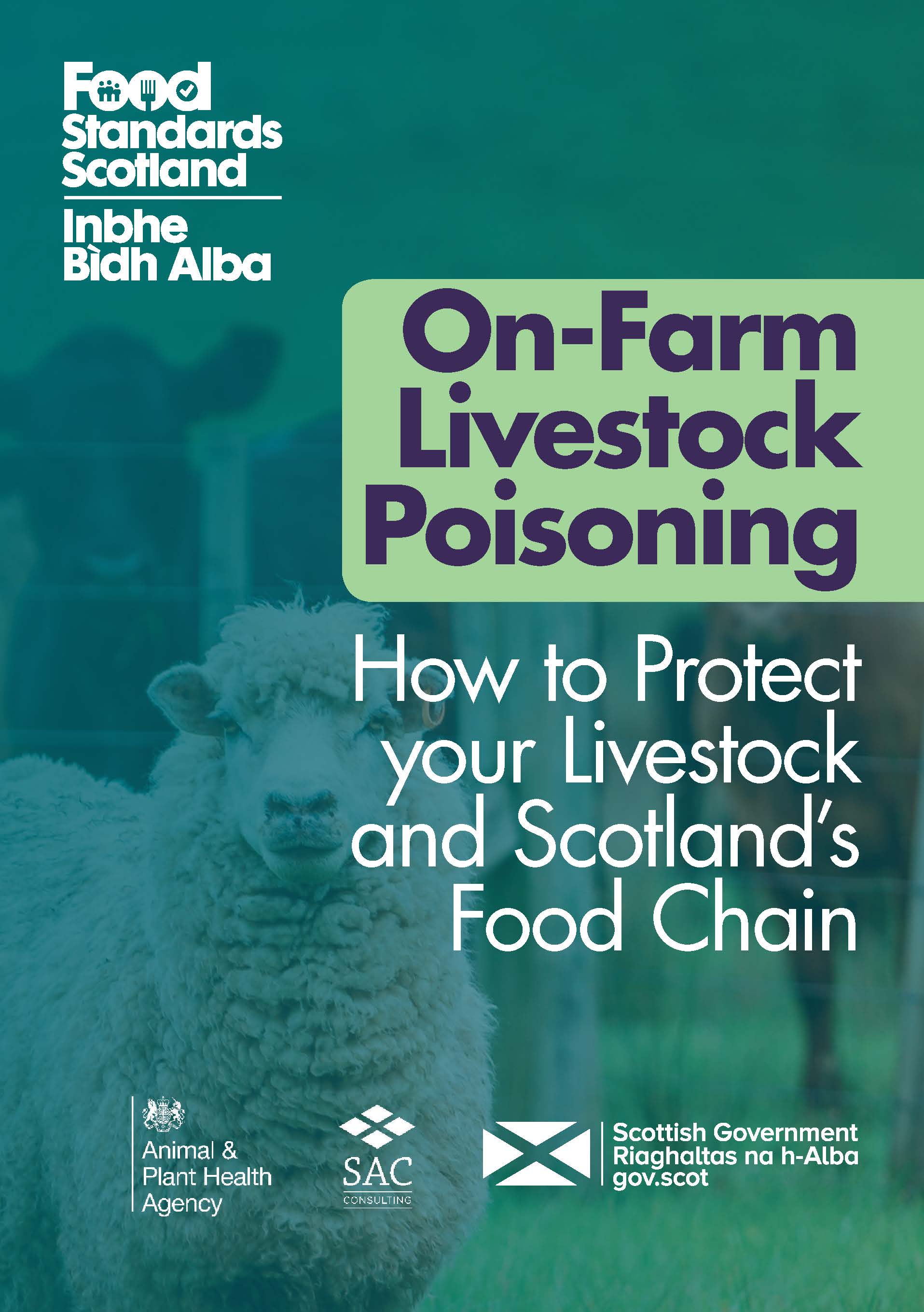On-farm poisoning
Poisoning incidents on farms are usually because animals have been exposed to lead or copper on farmland.
What's on this page:
The main causes of poisoning on farms are lead and copper.
Farmers can take these five steps to avoid this happening to their animals:
- Check that vehicle and fence batteries are stored securely and out of reach of animals
- Check fields and fences for fly-tipping before putting animals out to pasture
- Check buildings and equipment for old lead paint peeling off
- Check what feed sheep have access to. Some concentrates and minerals are for cattle only
- Check supplements are right for your sheep as breeds such as Texel, Suffolk and North Ronaldsay are more susceptible to copper poisoning
Most poisoning incidents are caused by lead, which can impact the health of animals and put consumers at risk. It can also result in animals being restricted from the food chain until lead levels in their systems are proved safe. This leads to financial costs to farmers as they can’t sell their animals for slaughter and need to pay for animals to be tested for lead.
Watch our video to find out what happened to a farmer in Angus, and what we are doing to raise awareness of lead poisoning.
Lead poisoning
Lead poisoning incidents commonly happen in the spring when cattle are put out to pasture. However, they can also happen in summer months. Young cattle are more susceptible due to their inquisitive nature.
Sources include lead batteries, flaking lead paint, fly tipping and bonfire ash.
Symptoms in animals include:
- blindness
- grinding teeth
- bobbing head
- twitching eyes/ears
- frothing at mouth
- muscle tremors
- staggering
- excitability
- convulsions
The animal usually dies shortly after it begins to show symptoms.
Farmers across Scotland shared their experiences of dealing with lead poisoning:
“We put three one-year-old heifers out into a roadside field in May. About two weeks later one of them was foaming at the mouth, in pain and grinding her teeth, looking dazed and blind. Within minutes of arriving back at the steading the first one died which was harrowing to witness. The cause of this was a car battery someone had fly tipped into the hedge which had then rolled into the field.” — David Warwic, farmer, Scottish Borders
“We had three or four dead cattle lying in the field — the cows had gone down with lead poisoning. It took morale to the lowest point that it’s ever been on the farm. We have a duty to care to these animals and do everything we possibly can to keep these animals happy and healthy.” — Steve Barron, farmer, Angus
Copper poisoning
Sheep are very sensitive to copper, although different breeds respond to it differently. Some breeds are very prone to copper poisoning. For example, Texel, Suffolk, North Ronaldsay and some continental breeds. Copper should only be supplemented in these breeds with extreme care.
Symptoms in animals include:
- weakness
- aimless wandering
- head-pressing
- yellowing of the gums, eyes and/or skin (jaundice)
Treatment options for copper poisoning are limited, and there is a very low chance of recovery in affected animals.
Fact
Around 550 cattle and 150 sheep in Scotland have been restricted from the food chain because of lead or copper poisoning since 2020, including over 70 deaths.
One of the causes of copper poisoning is feeding sheep concentrates or minerals that were designed for cattle, as these contain too much copper for sheep.
Spreading distillery by-product on pasture can also cause copper poisoning in sheep. Farmers are typically advised to remove animals from pasture for three weeks to allow the soil to absorb the product.
Other types of on-farm poisoning
Other types of on-farm poisoning incidents are less common but can include botulism. Botulism is a paralysing disease which is fatal for most affected animals. It is caused by a highly lethal toxin found in soil, which multiplies in rotting vegetation or carcases.
Rodenticides, ragwort, ergot, cadmium, arsenic and malicious contamination are some other less common causes of poisoning incidents on farms.
This leaflet is aimed at farmers to raise awareness, help prevent poisoning incidents and reduce the risk to consumers.
On-farm incidents: How to protect your livestock and Scotland’s food chain
Protecting your livestock and Scotland's food chain.
Farming and primary production
Food Standards Scotland works with the farming industry and primary producers to make sure that food is safe and authentic from the beginning of the food chain.
